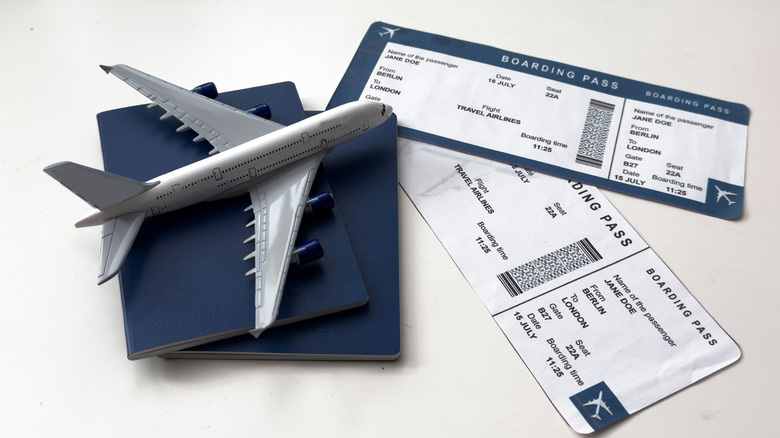Why Airlines Still Use Ancient Dot Matrix Printers To Print Your Boarding Pass
With technology continuing to change the way the world travels, there are certain aspects of the airline game that remain very much in the realm of the so-called "old school." Airplanes themselves, for instance, haven't changed all that much in overall design for decades. Likewise, did you know that most airlines still choose to employ dot matrix printers in their operations? They do, despite the fact that dot matrix printing tech is several decades past its prime.
The printer tech is so out of date that we'd wager that many of you may not even know what, exactly, sets a dot matrix device apart from more modern inkjet or laser-printers from the major manufacturers. They are, in essence, direct descendants of typewriters, utilizing an impact method to transfer letters and words to a paper-based destination via an ink ribbon that stretched over the page. They do so via a dot matrix printer with an electronic head that zips back and forth printing a grid of dots to form the required information on the page.
Given the advancements that have been made in the printing sector since dot matrix debuted in the 1970s, the question becomes why airlines still use them, particularly as their print quality is substandard to more modern models. The primary answer is simple, in that dot matrix printers are far more reliablethan modern machines. For that reason alone, airline outfits that utilize dot matrix printers prioritize in service of printing vital documents like boarding passes.
The old school printers are uniquely well-suited to airline needs
Reliability is, perhaps, second only to safety in the minds of consumers when it comes to airlines, so it shouldn't be surprising that an aviation company might seek to prioritize it at every possible point of contact. Since they are less prone to malfunction and less sensitive to harsh environments, they're also less prone to pricey breakdowns. That is also why dot matrix printers remain popular in other industries like auto garages, factories, and workshops, who rely on their tank-like performance and reliability to keep their paperwork and business filings in order.
Apart from reliability, it's still worth wondering why airlines haven't chosen to upgrade, as printing technology has advanced. Part of the reason is that, in general, boarding passes do not require any printed information other than letters, numbers and characters, meaning that airlines generally don't need anything fancy when it comes to printing them, or any of the other reports required by agencies like the FAA — which still uses floppy disks, btw — or the IATA. Moreover, the strict regulations imposed for such documents by those very agencies might actually make it difficult for airlines to pivot away from the dot matrix machines they've been using without issue for decades.
Dot matrix design also makes the printers ideal for long printing jobs, and not only cost less than their modern counterparts, but don't require potentially expensive software upgrades to operate. So, even as many airlines are pivoting away from paper in favor of digital boarding passes, it seems more likely that dot matrix machines may be phased out before they are outright replaced.

